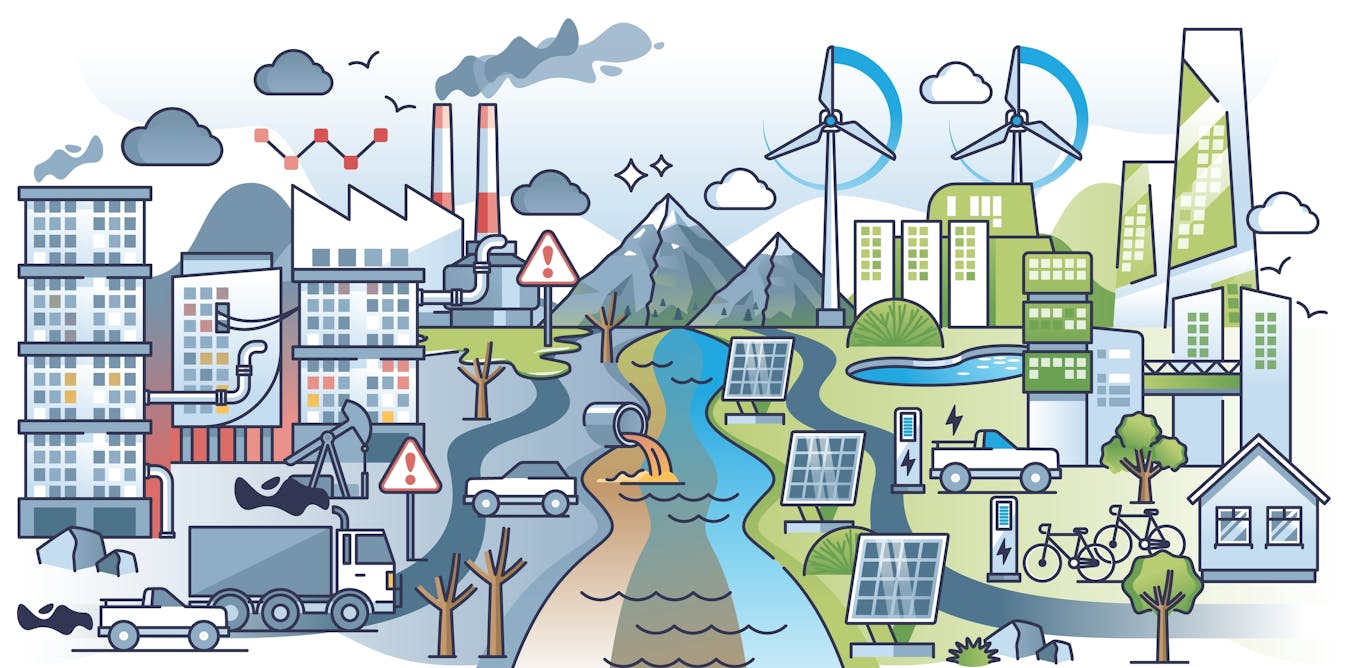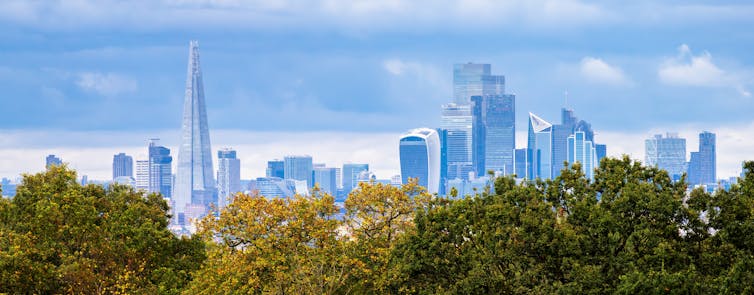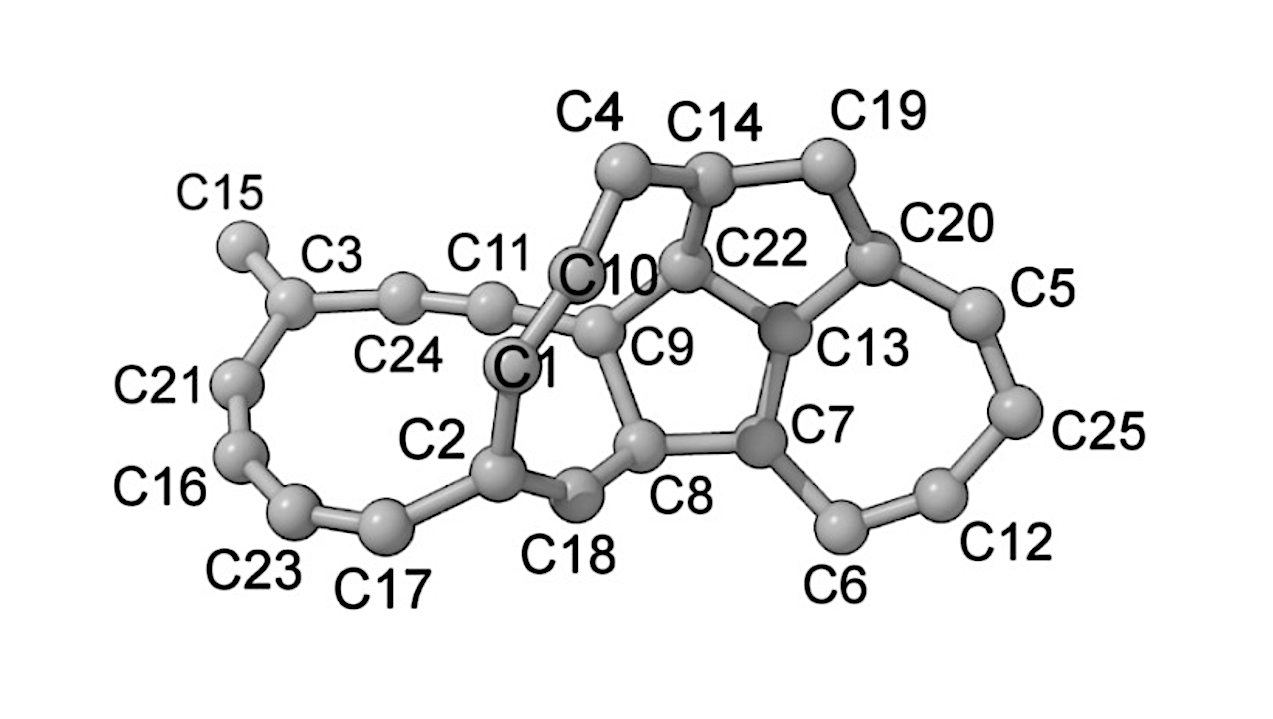Blog
-

vivo X300 Series Makes Global Debut with 200 MP ZEISS Ultra-Clear Imaging to Advance Flagship Excellence
SHENZHEN, China, Oct. 30, 2025 /PRNewswire/ — vivo today officially announced the global launch of its latest X-series flagships: the X300 and X300 Pro. Celebrating vivo’s 30th anniversary, the series underscores the…
Continue Reading
-

The discounted SwitchBot Bot can add smarts to your monitor and coffee maker for just $24
You don’t necessarily have to buy a bunch of pricey new smart devices to enjoy the convenience of a smart home. The SwitchBot Bot offers an easy, affordable way to bring smart control to many of the regular gadgets you already own, and right…
Continue Reading
-
3D Maps Bring Exoplanets Into Focus – astrobiology.com
- 3D Maps Bring Exoplanets Into Focus astrobiology.com
- Now in 3D, maps begin to bring exoplanets into focus Cornell Chronicle
- Horizontal and vertical exoplanet thermal structure from a JWST spectroscopic eclipse map Nature
- Scientists create…
Continue Reading
-

Intraoperative radiation reduces the recurrence rate of pancreatic cancer
Using targeted radiation during surgery – referred to as intraoperative radiation – to eliminate pancreatic cancer cells that have spread to areas around the pancreas, investigators at Johns Hopkins have been able to reduce the…
Continue Reading
-

India stun Australia with record run chase to reach Women’s Cricket World Cup 2025 final
Australian captain Alyssa Healy, returning to the playing XI after two matches on the sidelines due to injury, called it right at the coin toss and elected to bat first.
Healy, whose century had helped Australia chase down a record score against…
Continue Reading
-

Honda, VW bracing for outage
A Honda sedan moves down the assembly line on Jan. 28, 2025 at the automaker’s assembly plant in Marysville, Ohio.
Michael Wayland / CNBC
Global automakers are once again bracing for production disruptions due to a potential shortage of automotive semiconductor chips, this time sparked by the Dutch government amid geopolitical tensions between the U.S. and China.
Honda Motor became the first known automaker this week to reduce production due to the problem that involves chips from Netherlands supplier Nexperia, which is owned by Chinese company Wingtech Technology Co.
The industry was hopeful that a meeting this week between President Donald Trump and Chinese leader Xi Jinping in Asia would provide some relief, but no resolution on the chips issue has been announced.
Volkswagen on Thursday reportedly said it has until at least next week before its supplies impact production, while other major automakers have said they are monitoring the situation around the clock, attempting to mitigate disruptions.
“The chip situation from Nexperia, we have a cross-functional ‘war room’ in the building where I’m sitting that has this as [a] primary job,” Stellantis CEO Antonio Filosa told investors during a quarterly call Thursday. “And every day we are pushing actions and projects to extend our period. There is a day-by-day management of what is an industry-wide global issue.”
U.S. President Donald Trump and Chinese President Xi Jinping shake hands as they depart following a bilateral meeting at Gimhae Air Base on October 30, 2025 in Busan, South Korea.
Andrew Harnik | Getty Images
Such “war rooms” have become a regular practice in the automotive industry amid supply chain disruptions, which have become more common since the Covid pandemic rattled production and deliveries of many parts, including chips, starting in 2020.
Several automotive industry insiders confirmed to CNBC that war rooms have been established in their companies, as they look into alternative purchasing methods. They included working with major suppliers in an attempt to find alternative sources as well as buying on the open market.
“Suppliers across the motor vehicle industry are working to understand the potential effects on production and supply continuity,” MEMA, the largest vehicle supplier association in the U.S., said in an emailed statement. “Chips and diodes are foundational to automotive components and systems, from infotainment systems to door handles, to steering and braking. Even the absence of a single diode or chip can disrupt the manufacture of vehicles.”
Nexperia
The situation involving Nexperia began late last month, when the Dutch government took control of the company, in what was seen as a highly unusual move, reportedly after the U.S. raised security concerns.
In making the decision, the Dutch government cited fears that tech from the company — which specializes in the high-volume production of chips used in automotive, consumer electronics and other industries — “would become unavailable in an emergency.”
China responded by blocking exports of the firm’s finished products, sparking alarm in Europe’s auto industry.
German automakers are especially sensitive to Nexperia-related disruptions because they rely heavily on large, domestic suppliers, known as “Tier 1s,” and local production facilities and companies, such as Nexperia, despite much of its manufacturing moving to China.
The European Automobile Manufacturers’ Association said this week that carmakers were close to closing production lines because of the chip shortage, which comes four years after a shortage of such parts amid the coronavirus pandemic.
A close-up view of the Nexperia plant sign in Newport, Wales on April 1, 2022.
Matthew Horwood | Getty Images News | Getty Images
“This means assembly line stoppages might only be days away. We urge all involved to redouble their efforts to find a diplomatic way out of this critical situation,” ACEA Director General Sigrid de Vries said in a statement.
The chips affected are legacy semiconductors used in basic vehicle functions such as windshield wipers and window controls — parts that lack sufficient alternative sources, according to S&P Global Mobility.
A Nexperia spokesman referred to a previous statement from the company, which summarized the ongoing situation and said it is seeking an exemption from the export restrictions and working to mitigate the impacts of the decision.
Wingtech did not immediately responded for comment Thursday via email. The company earlier this week described the situation to The Wall Street Journal as “an existential threat [to Nexperian] because of the reckless actions of the Dutch government.”
Fluid situation
Honda’s production cuts impacts include all of its main North American plants, including large vehicle assembly and supporting facilities across the U.S., Canada and Mexico.
“We are currently managing an industrywide semiconductor supply chain issue, making strategic adjustments to production as necessary to carefully manage the available supply of parts and meet the needs of our customers,” Honda said Thursday in an emailed statement, calling it a “fluid” situation.
The impacts are expected to continue to spread to other automakers if a resolution is not found.
Ford Motor CEO Jim Farley last week said the chip problem was at the forefront of conversations when he made a trip to Washington, D.C, earlier this month. He called it a “political issue,” saying the company is working with the U.S. and China administrations to resolve it.
“It’s an industrywide issue. A quick breakthrough is really necessary to avoid fourth-quarter production losses for the entire industry,” said Farley, adding that automakers have gotten “really good” at maximizing component purchases such as chips following the crisis in 2021.
General Motors CEO Mary Barra made similar comments last week, calling it an “industry issue” that will hopefully be resolved soon.
“While this has the potential to impact production, we have teams working around the clock with our supply chain partners to minimize possible disruptions. The situation is very fluid and we will provide updates throughout the quarter as appropriate,” she said during the company’s quarterly earnings call.
Other automotive executives from Volvo, Mercedes-Benz and more have also shared similar thoughts with investors and the media.
“This is a politically induced situation … which means that the solution to this, or the resolution to this, resides in the political space, primarily between the United States and China, in this case, with Europe kind of caught in the middle,” Mercedes-Benz CEO Ola Källenius said Wednesday during an earnings call.
Continue Reading
-

Sertraline Shows Early Benefits on Core Depression Symptoms
One of the most common antidepressants, sertraline, contributes to a modest improvement in core depression and anxiety symptoms, including low mood, within two weeks, finds a new analysis of a major clinical trial led by UCL…
Continue Reading
-

Why ‘green’ finance isn’t always as sustainable as it seems
In the wake of the 2007-08 global financial crisis, green finance has been increasingly celebrated as a way to tackle environmental challenges. Banks, investment funds and insurers have rolled out a growing range of green products, from green bonds to sustainability-linked loans. This momentum is encouraged by international environmental efforts such as the Paris climate agreement.
By aligning financial flows with sustainability goals, the world can supposedly “green finance” its way into a sustainable future.
But beneath this green spectacle lies a more complicated reality. Green finance refers to a wide-ranging mix of private and public funds, products and practices. For example, there’s no consensus regarding what makes a bond green.
There is also little clarity around what current environmental, social, governance (ESG) frameworks – which encourage businesses and authorities to disclose and monitor their environmental and social performance – are truly achieving.
Ever wondered how to spend or invest your money in ways that actually benefit people and planet? Or are you curious about the connection between insurance and the climate crisis?
Green Your Money is a new series from the business and environment teams at The Conversation exploring how to make money really matter. Practical and accessible insights from financial experts in the know.
In 2015, the former Bank of England governor and current Canadian prime minister, Mark Carney, insisted that finance can and must urgently account for climate risks. Meanwhile, Stuart Kirk, former global head of responsible investments at high street bank HSBC, argued that these risks were overstated and too far in the future to be material.
Environmental issues have become a concern for financiers, but not necessarily out of commitment to improving planetary health – rather due to reporting costs, transition risks and reputational pressure. High-profile greenwashing scandals, such as “green bonds” allegedly linked to deforestation in Sumatra, have further eroded trust. This raises questions about whether green finance is more a branding exercise than transformation.
ESG investing explained. In the face of these ambiguities, the environmental sciences are involved in the expansion of green finance. As social scientists we have been following these developments, wondering whether they may help us pin down robust ways to develop green finance.
Some companies are now using science-based targets (emission reduction goals aligned with climate science), net zero transitions pathways or roadmaps, and high-integrity carbon credits (verified purchases of direct air capture credits to offset greenhouse gas emissions).
Most of these claim to rely on rigorous calculations. The language of science grants objectivity and legitimacy. At its most basic level, this “sciencewashing” uses the vocabulary and authority of science to claim sustainability outcomes.
Read more:
Green bonds can help finance clean energy – as long as the projects they fund are transparent
Green finance also provides many employment opportunities for environmental scientists who can work as consultants, auditors and certifiers, to assess the quality of green claims. Many startups have emerged, offering a range of high-tech services to provide environmental data to companies. That includes monitoring deforestation through remote sensing or using sounds to analyse wildlife activity.
Green finance-related industries are flourishing and more and more environmental graduates are being recruited to quantify emissions, build risk metrics, monitor changes in biodiversity and verify credits.
Sciencewashing
Drawing on five years of research and combining data emerging from participation in green finance conferences and seminars, interviews and document analysis, our study warns against different forms of sciencewashing.

Financial centres, like London, thrive on green finance but beyond them the benefits are unclear.
Taljat David/Shutterstock
Mounting evidence suggests a gap between the suggested possibilities and the actual outcomes of green finance. Many green finance products appear to serve financial markets and the wealthiest investors more than nature or vulnerable communities.
Even more concerning are the unintended consequences. Far from levelling the playing field, green finance can exacerbate inequality. For example, communities have been displaced to make room for renewable energy projects or offset schemes.
This creates what are known as green sacrifice zones: areas where environmental harm or social costs are tolerated in the name of advancing “green” goals.
Poorer countries often face higher borrowing costs in the name of climate risk, while wealthy economies continue to access cheaper capital. Insurance premiums are also rising in climate-vulnerable regions, pricing out those least able to afford them. So green finance can make the situation for the most vulnerable populations worse.
In its current form, green finance will most likely sustain business as usual, leaving the causes of environmental crisis untouched.
For green finance to deliver the transformative change its advocates promise, it must address the deeper political and social issues, such as the role of public authorities in regulating finance, or the relationship between green investment and global inequality.
If green finance is to serve collective wellbeing rather than the interests of a privileged few, we need rigorous and proactive public regulations and better public debates on what green finance ought to account for.

Don’t have time to read about climate change as much as you’d like?
Get a weekly roundup in your inbox instead. Every Wednesday, The Conversation’s environment editor writes Imagine, a short email that goes a little deeper into just one climate issue. Join the 45,000+ readers who’ve subscribed so far.Continue Reading

